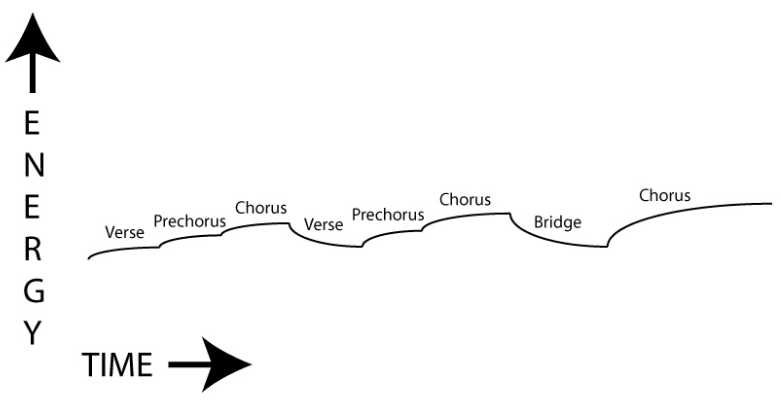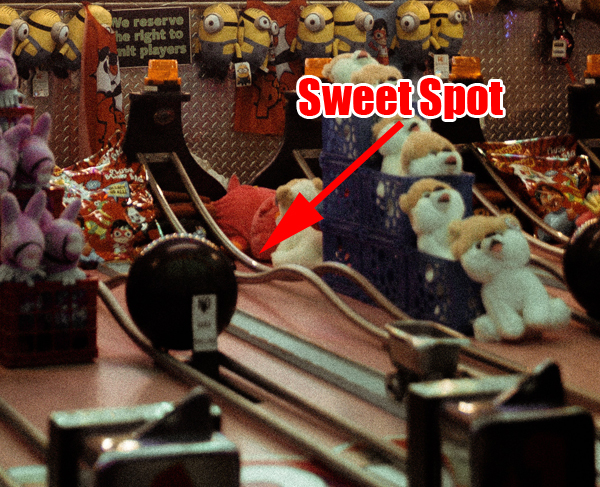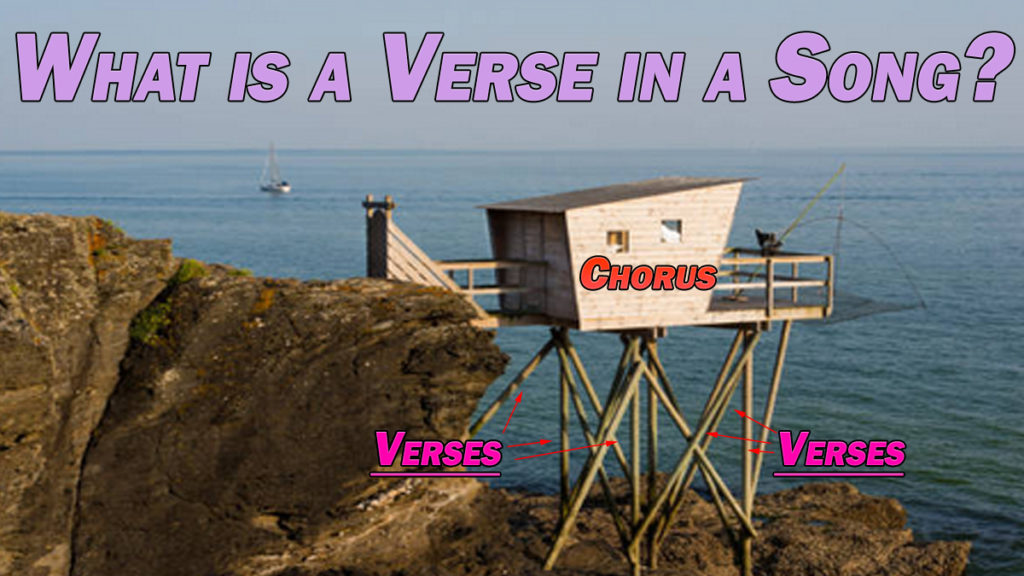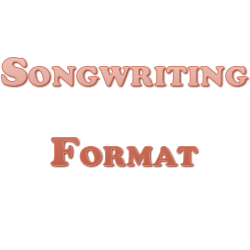Nearly all popular music follows same basic songwriting structures and contain the same handful of structural elements. Next to the chorus, the verse is arguably the next most important element in a song. Let’s define exactly what is a verse in a song.
What is a Verse in a Song
A verse in a song is typically the first section that you hear with lyrics/singing. Note that there are exceptions such as songs which begin the chorus, but otherwise typically it’s the verse that breaks those first lyrics.
While there’s no one structure which every popular song adheres to, a common structure is either:

… so a typical song might open with a musical intro, then go into that first verse as the vocals come in.
With that in mind, typically the lyrics in a verse are the singer’s first opportunity to begin to establish the meaning of the song.
The verse in a song’s main purpose is to support the song’s chorus. It does this both lyrically and musically.
The lyrics in the verse are working to build up to and support whatever the main idea behind the song is (which is typically delivered in the chorus).
This added context can make the meaning of the chorus more impactful for the listener and helps the listener to relate to that meaning more easily.
Musically, the verse typically is the low point in terms of energy of a song.
You can’t keep the same level of intensity, energy, and volume in a song throughout otherwise you’ll lose your listener’s attention.
By using the verse to establish a lower energy, the only direction to go is up until it peaks at the chorus:

The energy of the verses can be kept lower by using a simpler beat, less instruments, and delivering the vocal melody in a lower register and with less intensity. This is why you’ll oftentimes hear vocalists save the full potential of their voice, meaning the highest and most difficult notes, for a chorus.
The vocalist can bait the listener into lower expectations for their voice on the verse, then contrast it with more exciting and higher notes on that chorus.
While the melody on the chorus is designed to be the catchiest part of the song and thus is typically a simpler melody, the verse has a chance to be more complex.
This is why the verse is typically busier, wordier, and fits more notes in the same space where the chorus opens things up.
Note that all of this relates more to pop/hit songwriting.
There are plenty of artists and songs which place a much greater emphasis on lyrics over music which indulge more in their verses.
Iron and Wine’s “Trapeze Swinger” is a beautiful composition known for its poignant lyrics which it uses verse after verse to tell its story.
What is a Verse in a Song Example
The best way to demonstrate this is to show what is a verse in a song examples.
Note that each particular clip is set up to begin playing on the song’s first verse:
Katy Perry – Teenage Dream
Katy Perry’s “Teenage Dream” is my favorite from her album of the same name.
Aside from a guitar riff, the song begins a few seconds in on its verse. Katy sings similar notes in the verse as she does in the chorus, but she doesn’t put nearly as much energy behind them until that chorus hits.
This is another example of a song which holds the song back in the verses and fully ratchets up the energy once that chorus comes in. Restrained is the best way to describe Katy’s vocal delivery on those verses. This makes it feel more immediate when she belts out those lyrics on the chorus.
Also note that the verse melody is more complicated than the chorus. While still a relatively simple melody and a great hook in the verse as she moves up and down the scale, the chorus really simplifies things as the first three emphasized words “you. make. me.” are all the same note with a staccato delivery.
Just like we talked about earlier, lyrically the verses give the listener context for the main theme of the song here.
Ultimately “Teenage Dream” is a song about trying to encapsulate into words the feeling her partner gives to her. And while she succinctly drives that point home on the chorus (and with a great lyric I might add), “You make me feel like I’m living a teenage dream”, it’s the verses which offer specific examples to support why she feels the way she feels. This allows the listener to relate and better believe that chorus lyric when it hits:
Blur – Song 2
Blur scored a hit during the tail end of the 90’s era of Britpop in 1997 with the ridiculously simple “Song 2”. The riff is simple, the chorus is simple, the song is short (roughly 2 minutes), and yes, the verse example is especially simple.
Each verse is just 4 lines and 4-5 syllables per line. The vocal is sung in a lower register and the guitar and rest of the instrumental is comparatively restrained.
This works to set the stage perfectly for when that massive chorus hits. The chorus would be huge on its own, but it’s this contrast between buckled down verses and pure unbridled energy on that chorus which makes it feel that much bigger as the vocalist Damon Albarn is shouting the lyrics.
Song 2 really is one of the most quintessential examples of using dynamics in a song, and it’s all about the contrast between the verse and the chorus:
Carly Rae Jepsen – Call Me Maybe
I like this example because there’s some songs where, if most people just heard the verse, they wouldn’t have any idea of what the song was.
In other words, some songs are exclusively known for their choruses (to MOST people).
Carly Rae Jepsen’s “Call Me Maybe” was a MEGA hit in late 2011. This song was everywhere at the time; you couldn’t escape it. It played non-stop on the radio, it was used it commercials and movies, and there were parodies galore.
But it’s also one of those songs where virtually everyone knows that chorus, but most people would be hard-pressed to sing the verse.
And that’s not to take anything away from the verse; if anything it’s just a testament to how catchy that chorus is that it dominates the song to that extent.
More importantly, the verse is still doing its thankless job here, and that is to set up the star of the show, the chorus. I know I use this word a lot, but it’s that contrast between the comparatively forgettable melody of the verse into that huge chorus which makes the chorus work even better.
If Carly had sung an objectively more energetic and interesting verse here, the listener wouldn’t feel the chorus impact them quite as intensely.
In this way, it’s by design that a ho-hum, low energy melody is used on those verses.
In my complete guide on how to write a song, I actually teach this as a songwriting technique. In this “garbage to gold” technique, you intentionally contrast a forgettable verse melody with your chorus to make that chorus play even better.
And in getting back to “Call Me Maybe”, after the first chorus plays, the energy comes back down in that second verse so that they can repeat the same effect for the second chorus:
How Long is a Verse in a Song
There’s no rule on how long is a verse in a song. Some songs use a longer verse whereas some songs can’t wait to get to that chorus.
The better way to think about it is finding that sweet spot for your particular song.
If you come in too soon, you won’t have built enough anticipation for that chorus. Alternatively, if you make your listener wait too long and run your verse too long, you’ll lose their interest.

That’s why you need to feel out that sweet spot in terms of verse length as it’s going to be different for every song.
How Many Lines is a Verse in a Song
Similar to asking how long is a verse in a song, there’s no right answer to how many lines is a verse in a song.
You want to have enough lines to succinctly finish and deliver your thought, but not so many that you exhaust your listener and lose their interest.
If you still have more to say (a good problem to have in a world of writer’s block), save it for the second verse or the bridge.
What is a Verse in a Rap Song
A typical question considering the breadth of lyrics compared to other genres is what is a verse in a rap song.
While rap songs typically contain far more lyrics than other genres, honestly they’re not all that unique otherwise in terms of structure in regards to what is a verse in a rap song.
Some rap songs don’t have a clear cut chorus whereas others still revolve around the refrain/chorus, just like many other songs.
Kendrick Lamar’s “Sing About Me” keeps coming back to that titular lyric on its chorus after multiple verses. While his lyrical quality is strong, eventually the listener gets burnt out on listening to verse after verse after verse. This is why it’s necessary to break it up and come back to something familiar with that chorus.
Another formula which has proven to be very successful regarding rap songs which chart well is to feature a more melodic singer to fill this role alongside the rapper.
In these cases, the rapper will deliver the verses with a typical, more monotone delivery before bringing in that more melodic vocalist to deliver a big hook on the chorus to create a nice contrast between the sections, just like we talked about earlier.
JAY-Z’s “Empire State of Mind” is an example of this where JAY-Z delivers the rapped verses before things open up and Alicia Keys’ soaring vocals deliver that famous chorus.
This has proven that it works well time and time again on the top 40 music charts because of how effectively it delivers on exactly what we the listener subconsciously want out of a song with that energy progression and variety in what we’re hearing.
How to Write a Verse for a Song
You might think that writing the verse for a song is simple when a good rule of thumb is to make it less memorable than the chorus, but that’s not entirely true.
Check out my guide on how to write a song for tips on how to write a verse for a song.



